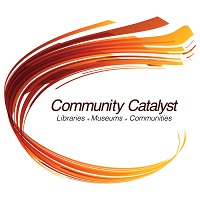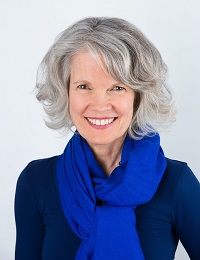Blog Posts | January 12, 2017
Share This
Editor’s Note: This past fall, IMLS launched Community Catalyst, a new initiative aimed at sparking a conversation around ways to help libraries and museums develop a deeper understanding of the best ways to work with communities to bring about positive change. Through a cooperative agreement with Reinvestment Fund, the agency scanned the literature and gathered input from the library, museum, and community revitalization fields. The results of that scan are part of a newly released report (PDF, 28MB). This is the latest in a series of blogs this month highlighting the initiative.
By Dr. Kathryn K. Matthew
Director
Seeing that major community change is needed is easy, the hard part is getting it done. While you may see an opportunity, you might not understand how others out in your community see it. Many of us have experienced that time when community members have expressed completely different, perhaps surprising, perspectives about a new idea. While you may recognize an opportunity or challenge, you may not clearly see how to create solutions and build connections to start the community work yourself. Or you might not know if others are already making progress within the community.
And the hardest part is that while you can see an opportunity to create change within a community, others may not believe in you. Or they may not believe in your vision, or believe that you are important enough in that community to have your vision or contributions realized. In these situations, libraries, archives, and museums (LAMs) have to “stretch” and build on their traditional roles in order to gain new insights and understand different perspectives. One way to embark on this change is learning from other fields how to see in new ways.
Thankfully, many LAM organizations have gotten some of the hard work accomplished already. As placed-based organizations, they matter to their communities. Place-based organizations are grounded in their communities, drawing in ideas and energy, and they seek to give back. They are defined, in part, by their place within the network of economic, social, and ecological connections that support the surrounding communities. They are trusted community spaces that provide important linkages and resources outward to all their surrounding connections. They bring about change and inspiration, with seemingly organic growth. A LAM’s importance and believability arises, in large part, from its inputs and outputs. If you are a well-integrated, place-based organization you are already on the path to creating change.
Our Community Catalyst report (PDF, 28 MB) has highlighted the advantages, as well as the challenges, that place-based organizations have in creating community change. While the organizations profiled in the report are well-connected and important, they have had to work hard to identify opportunities for change and to connect with others to find solutions. To do so takes some “stretching exercises” for even the strongest place-based organizations. A light workout by any measure, but a stretch nonetheless.
As noted in our Community Catalyst report, LAMs that successfully create change take on:
…more significant roles economically, they have also become increasingly engaged in their local communities in ways that transcend the traditional…services they provide…
[Note the “stretch”?]
…Through outreach, satellite services, and local partnerships…
[Note: Even more stretching!]
[Successful change agent organizations] …have extended the reach of their core services to places beyond their main campus locations, created new opportunities for people to access their resources, and become involved with activities not formally related to their primary mission—such as urban redevelopment or supporting early childhood education.
This stretching is familiar to those of you at large public library systems or major museums in tourist destinations. Both can, and have, played key roles in efforts to resuscitate moribund economies, revitalize abandoned areas of cities, or kick-start educational reform efforts. This stretching is also seen in many other types of LAMs as well. We refer to all of these organizations as “anchors” in the report.
Stretching enables an organization to understand how others see community challenges and opportunities and learn how to begin the process of change. This process requires actively opening your eyes while stretching. It requires adopting new lenses for understanding how your work, and the work of others, affects the community system. These new lenses are the important transformation that is needed to become a Community Catalyst.
One (although certainly not the only) such lens, or framework, is "Social Wellbeing" (PDF, 6.4 MB). This lens evaluates the effectiveness of community improvement efforts by considering the relative wellness of individuals, neighborhoods, cities and nations. It has its roots in federal policies based on “livability” principles and in a “capabilities” approach that factors-in social justice and inclusion opportunities. Also the “human development” approach was embraced by international policy organizations as a starting point for studies of social inclusion and social justice; eventually it was proposed as an actual measurement of wellbeing. Fundamentally, Social Wellbeing comes down to opportunities and access.
The second lens useful for viewing LAMs’ community work is "Collective Impact". This is a process of aligning community-based initiatives involving multiple entities from different sectors who come together around a specific opportunity with common measures of success. Sometimes this effort is led and supported by one “backbone” organization (e.g., a large public library, a national charitable organization, a public housing authority, or a community foundation) but sometimes not. A LAM institution does not necessarily have to function as the backbone of a Collective Impact project in order for the LAM organization to be successful as a catalyst.
We believe that “seeing” through these two lenses (Social Wellbeing and Collective Impact) helps you to create change and reimagine your institution’s role within that change process. Seeing how others see and then taking advantage of opportunities takes work. If your eyes are open to new possibilities, success can arise from the “stretching” done while using the lenses of Social Wellbeing and Collective Impact. These two lenses can help your institution and its staff “stretch” its role from community “anchor” to community “catalyst” and enact more meaningful and necessary community changes.
So let’s check the boxes for creating positive, lasting community change. Are you place-based? Check! Now, ask yourself these questions: Can you see from the outside of your organization inwards…that is, can you see a path to creating change and your role within it as others outside your LAM see it? Check! Are you clear about what distinctive contributions you can add to the effort? Check! Do you know who those important “others” in the community are who will work with you to create a path towards community opportunity? Check! And finally, can you work collaboratively to envision what can be done, chart a path together, and see what progress is being made collectively by your organization and others? Check!
Even if you checked all of the boxes, I think we all have some work ahead. While much has been accomplished by LAMs to become Community Anchor institutions, even greater impact takes time - creating sustained community relationships, building trust, and thoughtfully considering what contribution your institution can make - to become a Community Catalyst. All of these can tip your LAM institution toward successful participation in creating lasting community change. As we conclude in the Community Catalyst report:
"Although museums and libraries cannot eliminate social ills…altogether, their contributions can tip the scales…" Strengthening Networks, Sparking Change: Museums and Libraries as Community Catalysts report (PDF, 28 MB).

About the Author
Dr. Kathryn K. Matthew was confirmed by the Senate in September 2015 as the 5th director of the Institute of Museum and Library Services. You can send her comments on the Community Catalyst Initiative by emailing communities@imls.gov.
